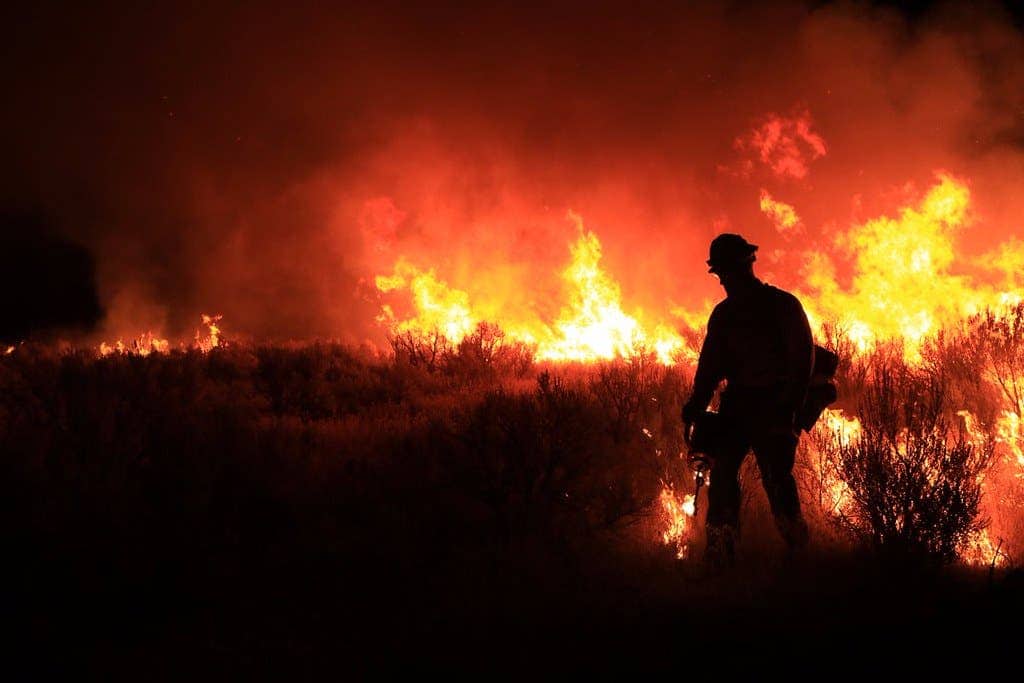Breathing wildfire smoke, even in low amounts, means you’re exposed to noxious gases, plant material, and incinerated synthesis materials. It’s bad enough, especially for those with respiratory conditions. But there’s more: the haze can also be loaded by microbes, a new study showed.

Wildfires over the past 3 years have resulted in lengthy episodes of smoke inundation across major metropolitan areas in Australia, Brazil, and the United States. In 2020, air quality across the western United States reached and sustained extremely unhealthy to hazardous levels for successive weeks from August through November.
Although the pulmonary and cardiovascular consequences of human exposure to smoke particulate matter are extensively researched, there remains little recognition or monitoring of microbes, a smoke component with potentially important health repercussions that has only just started to be studied.
That’s why a pair of researchers, Leda Kobziar and George Thomson, published a perspective piece, calling for a multidisciplinary approach from fire ecology to epidemiology to better characterize these microbes and determine how they might be making wildfire smoke even worse for human health.
“It’s not just comprised of particulate matter and gases, but it also has a significant living component in it,” Kobziar told Wired. “Wildfire smoke may actually spread beneficial organisms for an ecosystem but what might the consequences be for the spread of pathogens that we know are airborne?”
Wildfires are a source of bioaerosols, airborne particles made of fungal and bacterial cells and their metabolic byproducts. Once they are in the air, these small particles can travel hundreds or even thousands of miles. The extent will depend on the fire behavior and atmospheric conditions, eventually being deposited or inhaled.
But shouldn’t the microbes get burned in the flames? Not necessarily, the researchers argue. Wildfires burn at different intensities at different spots as they move around. This means complete combustion happens simultaneously with incomplete combustion, leaving lots of pockets in which microbes can survive the blaze.
Instead of dying, microbes can be transported in wildfires smoke emissions. They are basically hitchhikers on charred carbon and water vapor. While microbial concentration in smoke is higher near the fire source, these microbes may be active agents spreading infection, the researchers argue in their piece.
“The diversity of microbes we have found so far in the very few studies that have been done is impressive,” said Kobziar in a statement. “These taxa (groups of living organisms) were not found in non-smoky air in the same locations prior to the fire, proving that combustion and its associated winds aerosolize microbes.”

For example, there’s the fungus genus Coccidioides, a species that lives in soil. If a fire disrupts a landscape, it affects the soil directly by burning it with flames but also indirectly, as the hot and rising air creates an atmospheric void near the surface. This can produce strong winds that move the earth, aerosolizing the fungi and altering the local microecosystem.
A firefighter can then inhale that air filled with microbes, which can create a condition known as coccidioidomycosis, or valley fever, with symptoms such as fever and shortness of breath. This can then progress to pneumonia or meningitis. Coccidioidomycosis is actually very common among firefighters.
This could easily get more severe. Wildfires are getting bigger because of climate change and researchers are reporting an increase in the number of people in the American West infected with mycoses. Fungal spores “can at as an allergen and initiate asthma,” Mary Prunicki, from Stanford University, told Wired.
Studies with hurricanes and storms had shown that microbes agents can travel very long distances, but no one was able to prove a similar journey for bacteria in a smoke plume. But the ability of smoke to travel around the world suggests that it could be a “missing link” in explaining some patterns of infection.
“When infections are detected in patients, the potential causal agents that are screened are based on what is known to be endemic in a given region,” said Kobziar. “However, smoke blurs the lines between regions.”
The perspective piece was published in Nature.


